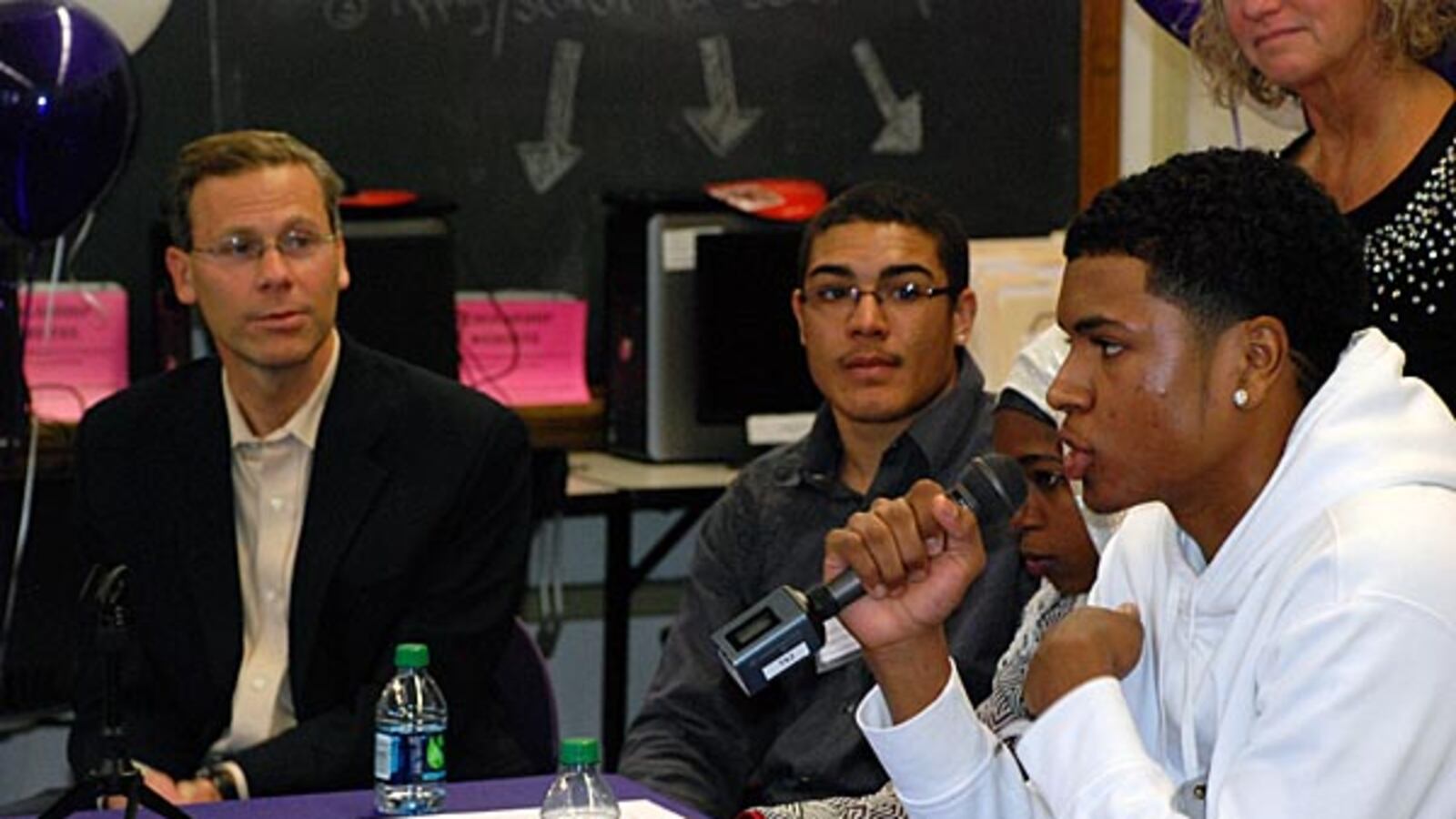The number of Colorado students graduating in four years continued its slow increase last year, according to information released by the Colorado Department of Education.
The state’s graduation rate for the class of 2013 increased by 1.5 percentage points to 76.9 percent — the same increment of change as the year before. The dropout rate also declined to its lowest point since 2003, with 2.5 percent of students statewide dropping out compared with 2.9 in 2011-2012.
More districts met or exceeded the state’s expectation for on-time graduation — at least 80 percent — than last year. To see how your school fared, search our database.
But it’s not all good news. Graduation rates for many minority students remain low, although the rates are increasing at a faster pace than for their white counterparts.
American Indian students posted the lowest graduation rates — just 61.4 percent of those students graduated on time, 15.5 points lower than the state average. Black and Hispanic students fared slightly better, graduating at rates of 69.5 percent and 65.4 percent respectively. By contrast, almost 83 percent of white students graduated on time and 86 percent of Asian students did so.
The state’s schools are also struggling to graduate students with disabilities, those learning English and those who are economically disadvantaged. Slightly fewer than 54 percent of the state’s students with disabilities graduated in four years, and 58.5 percent of students with limited English proficiency earned that diploma. Among students classified as being economically disadvantaged, 63.7 percent graduated on time.
State officials emphasized that the number of students earning diplomas increases significantly over the course of six years in high school rather than four. For the class of 2011, just under 74 percent graduated in four years but just over 80 percent graduated in six, which means that more than 3,600 students used the extra two years to earn their diploma.
“We see evidence that students take advantage of policies that give more time to work toward a high school diploma,” said Rebecca Holmes, the CDE’s associate commissioner for innovation, choice and engagement. “Districts and schools are finding ways to support students by making time a variable, and learning and college and career readiness the constant.”
Denver sees sixth year of growth
Denver Public Schools saw its graduation rate increase, continuing a six-year positive trend. Last year, just over 61 percent of Denver students graduated, up from 58.8 the year before. The district also saw its dropout rate decrease, to five percent.
For students who entered ninth grade at a DPS school, the graduation rate was somewhat higher, at 68.6 percent.
District officials and students celebrated the upward trend at South High School, where the graduation rate has increased by 11.6 percentage points since last year, to 78.2 percent. Three years ago, only 58.8 of South students graduated on time.
At a panel that included district superintendent Tom Boasberg, students and staff, the discussion revolved around the positive news for South.
“We are family,” said Ishah Konneh, a senior at the school. “That’s what makes South different.”
Her principal echoed Konneh’s statement, saying that the school has “an intentional focus on [knowing] each student.”
Most other comprehensive Denver high schools saw smaller increases, with jumps ranging from one to three percentage points. And at Manual High School, whose principal was dismissed last week following significant struggles with academic achievement, the graduation rate fell more than 13 percentage points to just over 62 percent.
Denver’s alternative schools also continued to struggle to graduate students on time. The five year graduation rate for those schools, which are targeted to students at high risk of dropping out, was 40.2 percent, a five-point increase over last year.
But rates varied widely between schools. At Emily Griffiths Technical College, only 2.2 percent of students graduated on time and only 19.2 students received any kind of high school diploma. In northeast Denver, Vista Academy, another alternative campus, exceeded the district average, graduating 69.2 percent of its students.
Other large districts’ rates vary
Most other large school districts in the state either saw mostly static graduation rates or posted small increases. One exception was Englewood schools, which saw an 11.5 percentage point jump.
- Littleton, 92.1 percent — up from 90.2 percent for the 2011-12 school year
- Boulder Valley, 90.9 percent — up from 89.7 percent
- Douglas County, 88.8 percent — up from 87.4 percent
- Cherry Creek, 87.4 percent — up from 87.1 percent
- Poudre School District, 84 percent — up from 86.0 percent
- Jefferson County, 81.5 percent — up from 81.4 percent
- Adams 12-Five Star, 73.7 percent — up from 69.9 percent
- Colorado Springs District 11, 66 percent — down from 67.0 percent
- Englewood, 55 percent — up from 43.5 percent

